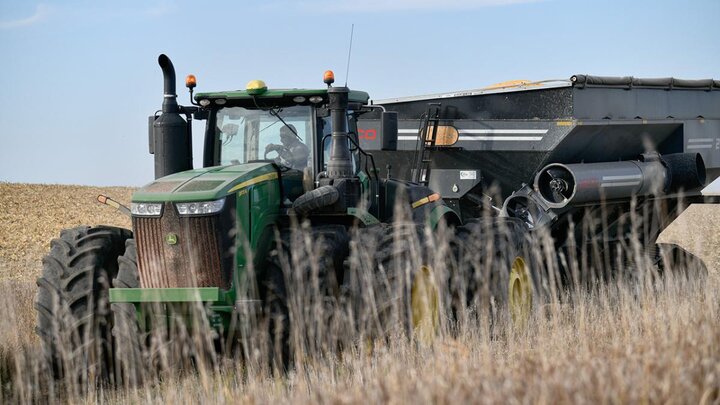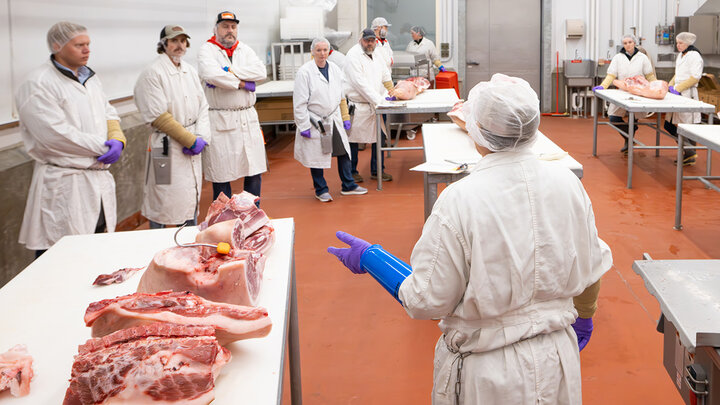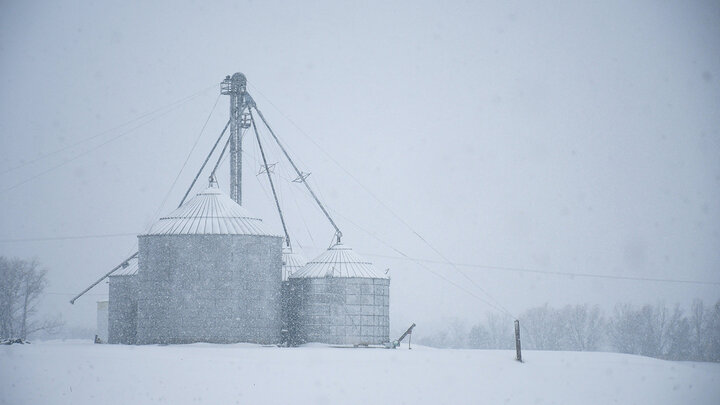Lower commodity prices and higher production costs over the past couple of years have crop producers concerned about tighter margins and cash flow for their operations.
The federal farm income safety net provides substantial support to producers through commodity programs, crop insurance programs, and disaster assistance. Crop insurance has been the primary safety net tool for producers in recent years as commodity prices generally fluctuated at levels above commodity program support levels. Even declining markets in the past couple years left prices that remained above Price Loss Coverage (PLC) support levels and revenue calculations above Agriculture Risk Coverage (ARC) guarantees unless there were significant yield losses at the county level for ARC-CO or the individual farm level for ARC-IC.
The outlook is changing however as declining prices run into support levels that are increasing based on the past few years of higher prices. The ARC program provides a revenue guarantee tied to 86% of a benchmark revenue calculated from a five-year moving average price and a five-year moving average trend-adjusted yield. The PLC program provides support if prices fall below the higher of a legislated reference price or 85% of a five-year moving average price. With the higher prices experienced during the past few years, the five-year moving average price has increased and both ARC and PLC support levels have gotten stronger.
A look at ARC and PLC protection and payment levels provides a picture of what current support and cash flow may look like and what future support could be under current or future farm legislation.
2023 Crop Year
While the 2023 crop harvest occurred a year ago, the farm program payments tied to the 2023 crop are just now being paid to producers. Payments under ARC and PLC are dependent on the national marketing year average price, which is not final until the end of the marketing year that essentially runs from harvest to just before the next harvest. Once the 2023 crop marketing year was complete at the end of August 2024 for corn, sorghum, and soybeans among other crops and the final price estimate was reported at the end of September, the program payments could be paid in October.
While market prices for the 2023 crop fell sharply from the previous year for most commodities, they were still above the trigger price level for PLC, meaning no PLC payments were made on the 2023 crop. As the details show in Table 1 for corn as an example, the reference price that would have triggered a PLC payment was $3.70/bushel. When the national marketing year average price finished at $4.55/bushel, it was down substantially from the previous year, but far above the reference price and would have taken another 19% loss to trigger PLC payments.
| Commodity | PLC | ARC | Price** | Downside Price/Revenue Risk Covered by ARC/PLC | ||
|---|---|---|---|---|---|---|
| Effective Reference Price | Benchmark Price | Effective Price at Benchmark Yield* | Price Change to Have Triggered PLC | Yield Change to Have Triggered ARC | ||
| Corn | $3.70 | $3.98 | $3.42 | $4.55 | -19% | -25% |
| Grain Sorghum | $3.95 | $4.31 | $3.71 | $4.93 | -20% | -25% |
| Soybeans | $8.40 | $9.57 | $8.23 | $12.40 | -32% | -34% |
| Wheat | $5.50 | $5.50 | $4.73 | $6.96 | -21% | -32% |
* Effective price for ARC based on 86% of benchmark price that would trigger ARC payments assuming no yield loss from benchmark yield.
** Projected prices for 2024 based on projections from USDA-WAOB and USDA-FSA as of September 2024.
For ARC to trigger payments, revenue has to fall below the 86% revenue guarantee level tied to benchmark yields and prices. Referring to Table 1 again for corn as an example, the national marketing year average price of $4.55/bushel for corn was above the ARC benchmark price of $3.98/bushel, meaning yield would have had to fall 25% below the benchmark yield in order for revenue to fall 14% below the benchmark and trigger an ARC payment. Having that large of a yield loss at the county level to trigger an ARC-CO payment is uncommon but it did happen 28 times among the 176 crop-county-practice (irrigated and nonirrigated) combinations for corn in Nebraska for 2023 due to varying production conditions across the state. In total, there were 238 different crop-county-practice combinations that triggered ARC-CO payments in Nebraska for 2023. While actual payments on a farm with base acres enrolled in ARC-CO are dependent on the blended results of both irrigated and nonirrigated production for each crop and payments on a farm with ARC-IC are dependent on the combined results of all program crops on the farm, total ARC payments for Nebraska for the 2023 crop could add tens of millions in cash flow for producers in October 2024.
2024 Crop Year
Table 2 provides a look at the 2024 crop and projections for potential ARC and PLC payments due to producers in October 2025. For 2024, the protection levels for both ARC and PLC have moved higher even as projected market prices have fallen further.
| Commodity | PLC | ARC | Projected Price** | Downside Price/Revenue Risk Covered by ARC/PLC | ||
|---|---|---|---|---|---|---|
| Effective Reference Price | Benchmark Price | Effective Price at Benchmark Yield* | Projected Price Change to Trigger PLC | Projected Revenue Change to Trigger ARC | ||
| Corn | $4.01 | $4.85 | $4.17 | $4.10 | -2% | 2% |
| Grain Sorghum | $4.06 | $5.01 | $4.31 | $4.10 | -1% | 5% |
| Soybeans | $9.26 | $11.12 | $9.56 | $10.80 | -14% | -11% |
| Wheat | $5.50 | $6.21 | $5.34 | $5.70 | -4% | -6% |
* Effective price for ARC based on 86% of benchmark price that would trigger ARC payments assuming no yield loss from benchmark yield.
** Projected prices for 2024 based on projections from USDA-WAOB and USDA-FSA as of September 2024.
Looking again at corn, the five-year moving average price that creates the ARC benchmark moved from $3.98/bushel to $4.85/bushel for corn, moving the effective price protection level (assuming a benchmark yield) from $3.42/bushel to $4.17/bushel. The effective PLC reference price moved from its legislated minimum at $3.70/bushel to $4.01/bushel. With a national marketing year average price projection of $4.10/bushel from September USDA supply and demand estimates, current projections would be for no PLC payments, but substantial ARC payments even if yields were above benchmark levels. However, if prices fall further below current projections or if yields come up short, PLC and ARC payments in October 2025 could be substantial and could be in the hundreds of millions of dollars, a level not seen in Nebraska since 2020.
2025 Crop Year
The federal farm income safety net for 2025 is a question since the fate of the farm bill remains uncertain at this point. When the 2018 Farm Bill was extended one year in late 2023, it provided commodity program authority for the 2024 commodity year. Crop insurance and some standing disaster assistance programs have permanent authority, but commodity program support is dependent on current farm bill legislation. When the one-year farm bill extension expired at the end of September, so did authority to carry existing commodity programs forward for the next commodity year.
While the future of the farm bill remains in limbo at the present time, there are expectations for Congress and the President to deliver a new farm bill or an extension of existing legislation sometime before the end of the calendar year. If there is no action before then, the specter of something called permanent legislation would take effect and establish commodity program support based on language from the last farm bill written without an expiration date back in 1949.
Presuming something is done, we can project potential farm income safety net support for the 2025 crop. Support levels would continue to grow year over year under a status quo policy alternative, whether from a simple extension or a new farm bill. Current farm bill legislation in the U.S. House of Representatives and proposals in the Senate could increase it even further.
Looking at the status quo programs as a baseline, we can compare the relative support of ARC and PLC in Table 3 for the 2025 crop.
| Commodity | PLC | ARC | Projected Price** | Downside Price/Revenue Risk Covered by ARC/PLC | ||
|---|---|---|---|---|---|---|
| Effective Reference Price | Benchmark Price | Effective Price at Benchmark Yield* | Projected Price Change to Trigger PLC | Projected Revenue Change to Trigger ARC | ||
| Corn | $4.26 | $5.03 | $4.32 | $3.84 | 11% | 13% |
| Grain Sorghum | $4.51 | $5.30 | $4.56 | $3.93 | 15% | 16% |
| Soybeans | $9.66 | $12.17 | $10.46 | $9.65 | 0% | 8% |
| Wheat | $5.56 | $6.72 | $5.78 | $5.79 | -4% | 0% |
* Effective price for ARC based on 86% of benchmark price that would trigger ARC payments assuming no yield loss from benchmark yield. ** Projected prices for 2025 based on market year average price projections from FAPRI as of August 2024.
Under existing program rules, effective reference prices for PLC would continue to increase, with the corn reference price that increased from $3.70 in 2023 to $4.01 in 2024 increasing further to $4.26 in 2025. If the projected national marketing year average price falls to $3.84/bushel as projected in recent baseline projections from the Food and Agricultural Policy Research Institute (FAPRI) at the University of Missouri, then the price would already be 11% into PLC payment territory. Similarly, the effective price trigger for ARC assuming a benchmark yield would be $4.32/bushel for corn and would already be 12% into ARC payment territory assuming benchmark yields. The result could be even larger ARC and PLC payments for the 2025 crop than the 2024 crop under existing policies and market projections.
While future federal farm program support is uncertain at this time pending Congressional action on a farm bill, there is a general expectation that support levels will grow for 2025. That would not make up for the loss in market prices over the past couple years, but it could eventually provide substantial cash flow for producers, something commodity programs have not done for several years.
References
Lubben, B.D. 2024. “A look at farm bill safety net.” Nebraska Farmer online. October 11. Accessed at https://www.farmprogress.com/commentary/a-look-at-farm-bill-safety-net.
U.S. Department of Agriculture Farm Service Agency. “ARC/PLC Program” website. Accessed at https://www.fsa.usda.gov/programs-and-services/arcplc_program/index




